BLOG
The COVID-19 emergency declaration has once again made it difficult for us to leave our homes. These are difficult times, but we hope that all of you are healthy.
We have begun working from home here at CheFuKo, but we remain committed to continuing our activities, adapting to these new conditions and helping those in need in whatever ways we can.
Since we began our blog in 2013, we have been making posts about our support activities, describing the various projects and programs we have engaged in over the years. But one thing we haven’t done is a retrospective on our activities of the past. That is why our second new blog series, CheFuKo Activities, will be a way for us to reflect on our last few years and share some previously undisclosed stories about the time we’ve spent in various places around the world!
In this first entry, we will be covering the beginnings of our support activities in the Eastern European country of Ukraine!
Our origins as an organization begin with the 2011 Tōhoku Earthquake and the ensuing Fukushima Daiichi nuclear disaster. As a country that has experienced its own nuclear disaster, Ukraine is a location which is close to our hearts. We have been operating there from our foundation in 2013 until present day.
Working alongside our partners at the Ukrainian non-profit organization, the Chernobyl Hostages Fund, we have conducted various support activities over the years, including the donation of funds and supplies, cultural exchange programs, and thermotherapy. The Chernobyl Hostages Fund is an organization that aims to support the victims and families of the 1986 Chernobyl disaster through measuring and monitoring the overall health of those who live in contaminated areas as well as assisting medical procedures at hospitals and sanatoriums.
Picture (left): CheFuKo Senior Advisor Asai and the head of the Chernobyl Hostages Fund, Ms. Duncheva.
Picture (right): A selection of the medical equipment purchased through CheFuKo’s donation funds.
It has been estimated that several hundred thousand people were affected by the accident at the Chernobyl Nuclear Power Plant, including those who were forced to evacuate their homes.
While there is no evidence that links the radiation exposure directly to diseases like cancer and leukemia, it has been reported that the number of patients with these cases increased dramatically in the years following the accident. Even now, 35 years later, the children and grandchildren of these victims continue to suffer from the aftereffects of this terrible incident.
(A panorama view of the former Chernobyl Nuclear Power Plant, June 2013. From left to right, the New Safe Confinement under construction and reactors 4 to 1. Source: Wikipedia)
One of our support activities oriented towards Ukraine is the Ukraine & Fukushima Children’s Exchange Program. The goal of the program is to invite children who don’t have the opportunity to travel overseas to visit Japan, where they can learn about the current situation in Fukushima and explore a foreign culture. Since Ukraine is a landlocked country, the children are always overjoyed to see the ocean! We will be talking more about our exchange program in our next post of this series.
Nastya Konunchuk, 15 years old at the time of her visit, is an artist who enjoys drawing pictures, both at school and at home.
When Nastya visited Japan during 2019’s Ukraine & Fukushima & Children’s Exchange Program, she brought one of the pictures she had drawn to the CheFuKo office.
Nastya, one of the children who participated in the Ukraine & Fukushima Children’s Exchange Program (Right)
There is a certain theme represented in this picture. Can you guess what it is? The picture shows a girl and a woman who were born at the same time as two separate nuclear disasters.
The 8-year-old girl at the top of the picture and the nuclear power plant drawn behind her are representative of the Fukushima Daiichi nuclear disaster that occurred 8 years before Nastya’s visit in 2019. The 34-year-old woman drawn beneath her and the building to her side represent the Chernobyl disaster that took place 34 years ago.
The girl and the woman in the picture look somewhat sad, but strong at the same time. We wonder what they are looking at. On the back of the picture frame is a message from Nastya: “Children do not deserve suffering.” In both the cases of Ukraine and Fukushima, the fallout of the nuclear disasters have caused countless people to suffer for many long years, with one of these people being Nastya herself.
The picture seems to suggest that we should never forget the tragedies caused by these nuclear accidents. What does it make you think of?
While it’s difficult to imagine a day when we won’t have to think about the nuclear disasters, we can only pray that the affected communities and people will continue to heal. We can’t change the past, but we are certainly capable of changing the future!
Here at CheFuKo, we will continue to play our part in helping those in Ukraine and Fukushima recover from their nuclear accidents and sharing their experiences and aspirations with the rest of the world.
For those of you who are interested in supporting Ukraine through activities such as the donation of medical supplies and thermotherapy, please consider joining us as a CheFuKo Monthly Supporter. We look forward to working with you to improve the lives of the children and the communities that support them!